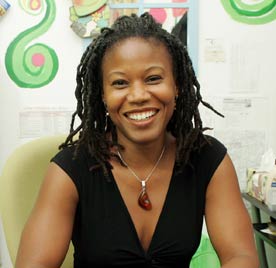Many of the people who came to the meetings were outraged that the opponents claimed to represent the community, though many of them had only lived in the area a few years. “For me, if someone’s been here five years or more, they have a right to complain. But if they’ve only been here a year, they haven’t had enough time to see what the changes have been in the community,” says Clara Garcia, who had worshipped at Blessed Sacrament since she moved to Jamaica Plain in 1979.
Garcia was one of several former church parishioners who were appointed by Mayor Thomas Menino to serve on a community advisory board to make sure the project represented the neighborhood’s best interest. Strength came from other quarters, too, like the priest at another Jamaica Plain church who let JPNDC hand out fliers after services about upcoming community meetings.
With opposition to the project put aside, the developers have concentrated on finding money to complete the church’s overhaul. It will be the last of the five buildings to be renovated.
Some details remain to be worked out, including the community space that will be in the front section of the former church. Gutierrez refers to this community room as a plaza, using the word commonly used in Latin America for a central public square. She and other former parishioners are eager to be involved in planning this space, where they hope to display mementos of the church itself and of their organizing work in the community. Gutierrez has pictures of her daughter’s first communion and baptism that she intends to contribute.
She has been to many of the planning meetings throughout the process of turning the church into housing, before JPNDC purchased the church and during the acrimonious sessions that followed.
“I encouraged people to come to the meetings,” she says. “It’s really hard for people to sit down and talk about something different. They were hoping the church would re-open. You were crying inside, so it wasn’t easy. But it was a reality check.”





Comments